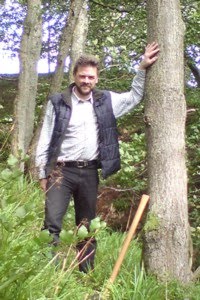 Often, when we think about the past, we do so in our imaginations, using the pictures and impressions we have picked from our shared visual culture, we mix the real things we find into a fantasy world. Envisioning the environment in terms of its familiar topography and plants does not present much of a problem, domestic animals are bits hazier, but most of the things that made up the fabric of life just don’t survive here in our damp climate. However, even trees in the picture may not be clear, the focus of archaeology is on tools, seldom extending to a consideration of the materials and products that gave them utility and value. How to discuss, visualise and define things that no longer exists except in the imagination is one central issues of presenting archaeology.
Often, when we think about the past, we do so in our imaginations, using the pictures and impressions we have picked from our shared visual culture, we mix the real things we find into a fantasy world. Envisioning the environment in terms of its familiar topography and plants does not present much of a problem, domestic animals are bits hazier, but most of the things that made up the fabric of life just don’t survive here in our damp climate. However, even trees in the picture may not be clear, the focus of archaeology is on tools, seldom extending to a consideration of the materials and products that gave them utility and value. How to discuss, visualise and define things that no longer exists except in the imagination is one central issues of presenting archaeology.
ROGUECLASSICIST’S BULLETIN ~ September 8, 2025
10 hours ago






















